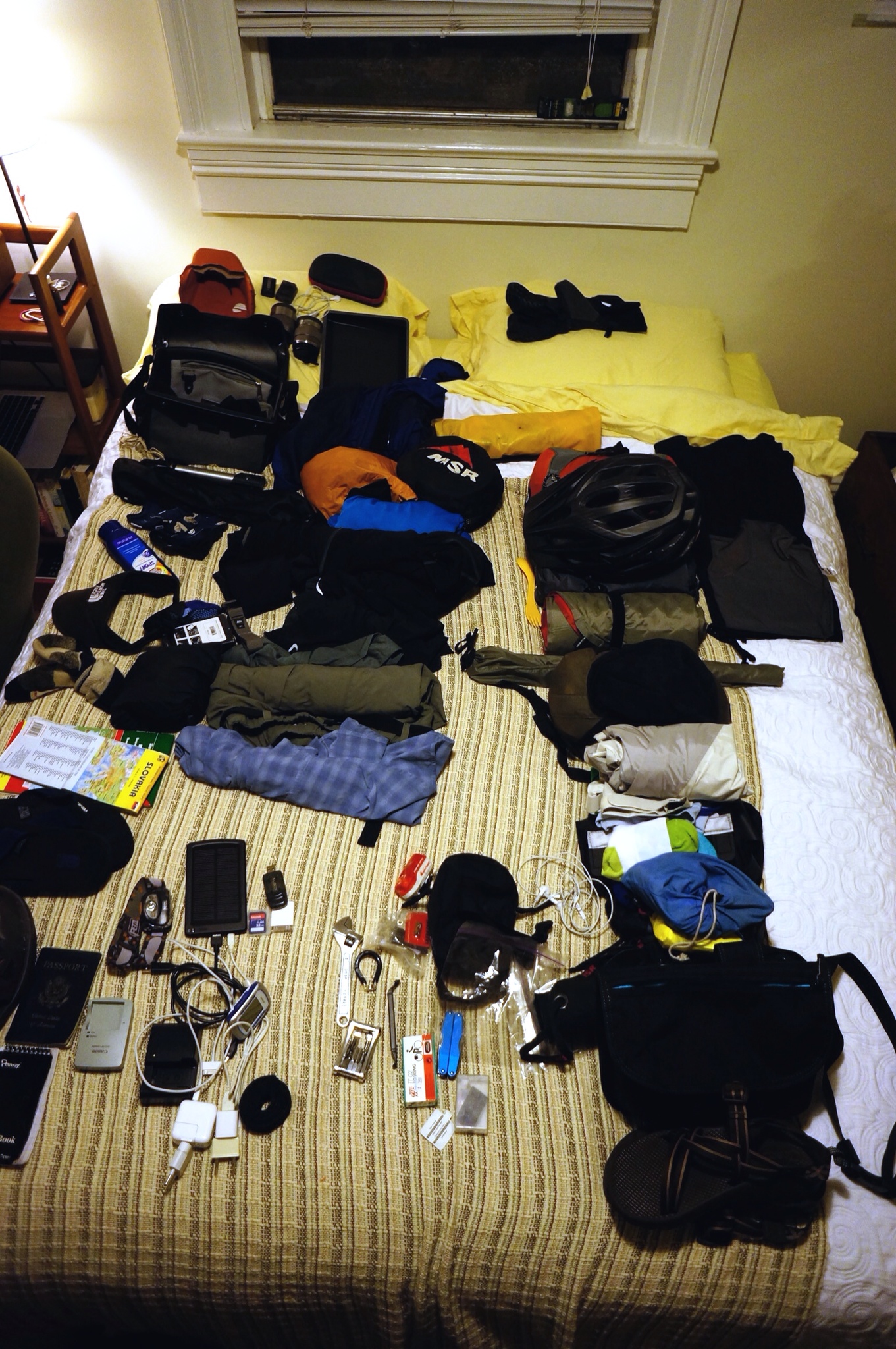I promised I'd write about climate change and what we learn about Eastern Europe, but right now I have a more pressing decision to make: Which bike should I bring to Europe?
This is what I like to call #firstworldproblems — which of my five bikes should I take on vacation?
I have already ruled out the following three bikes. My racing bike is beautiful and fast, but it can't cary 30 lbs. The mountain bike is amazing, but it also can't carry weight. The folding bike is, in theory, meant for this type of vacation, but I don't want to pull the trailer. (It folds into a suitcase that can become a trailer. If I took this bike, I'd have to take the trailer in order to fly home with it, as we're not flying out of the same airport that we're arriving at. Also, its small wheels make me a bit slower.)
The bikes are shown below in their natural environment:
There's a story behind each of these (mt. bike on craigslist, folding bike as a going away gift from an old job, and racing bike that I built piece by piece over a few months), but let's focus on the remaining two bikes I'm choosing between: my steel super-touring bike, and my carbon fiber touring bike.
Bike Model: Bruce Gordon Rock 'n Road Tour-ex
Given Name: del Fuego
Story: This beast/bike was a gift from my father for finishing my masters' program. We both got Bruce Gordon bikes and rode across the country in the summer of 2003, from Virginia to Oregon. I then took this bike and rode from Palo Alto to Ushuaia, Argentina, and then across the U.S. again on the Ride for Climate project. Needless to say, this bike has had a good life.
The problem with this bike is that it weighs about 35 pounds. It has downhill rino-lite rims, as well as super strong tubing. (One reason for the weight is I added a two pound kickstand, which props the bike up as shown in the picture.) This bike is slow. On the other hand, this bike will not break. You could run a truck over it. In fact, Aerolinas Argentinas did run a truck over it at the Ushuaia Airport. The frame was fine. The wheels needed to be replaced…
In all, this bike has more than 25,000 miles of loaded touring, and over the years I've replaced every part except the hubs and the frame.
Bike Model: Pedal Force CX2
Given Name: The Black Death

Story: I had a steel commuter bike (mid 90s REI), but the frame broke in early 2011. My boss at the time, an avid cyclist, had purchased a Pedal Force cyclocross frame, but then realized it was too big for him. He sold it to me at a great discount, and I built it up with a mix of old and new components. It is made of carbon fiber, but it has eyelets for a rack, and is designed to hold abut 15 to 20 lbs. I used it on this tour, which was awesome.
I commute to work on this bike, which weighs about 27 lbs. (it has heavy-duty wheels, a rear rack, and fenders, making it heavier and sturdier than most carbon bikes). One of my friends started calling it “The Black Death,” and the name stuck. It earned that name because carbon fiber, though extremely strong, can shatter if it is damaged. It is also, of course, black.
I love this bike. It is fun to ride and beautiful to look at. Pedal Force didn't cover it with decals, and I give them huge props for that. I emailed the company to ask about touring on it, and they said that they didn't recommend more than 220 lbs. for rider + gear. I weigh just under 190, and I'll be carrying just under 30, so it is extremely tempting to take this bike and ride 8 fewer pounds over the Tatras Mountains.
While I'm still undecided, I'm leaning towards the steel bike. Even though this is only a three week trip, and we're traveling light, the memory of the truck running over my bike burns in my mind. I might be a little slower, but I'll have a lot more peace of mind. However, I am afraid I won't be able to keep up with my girlfriend. Maybe I'll have her carry all the gear…







